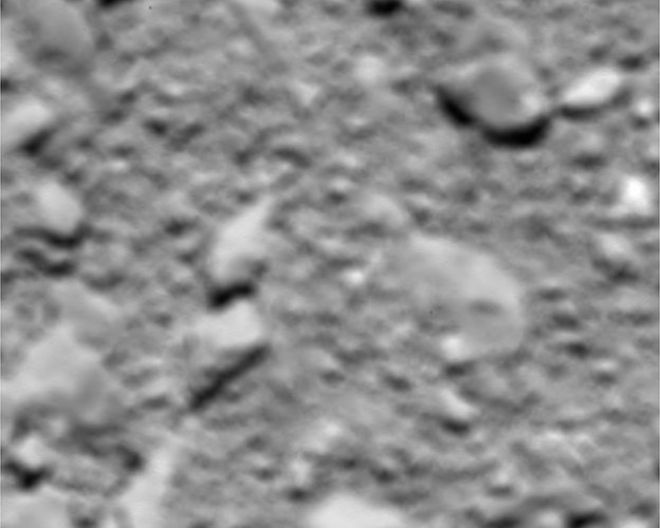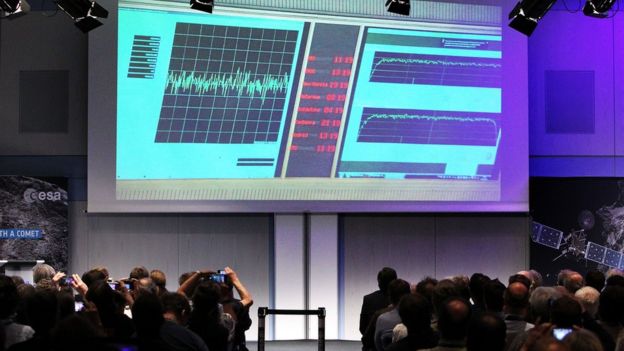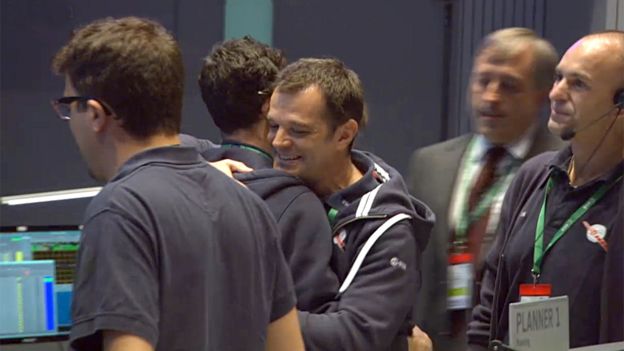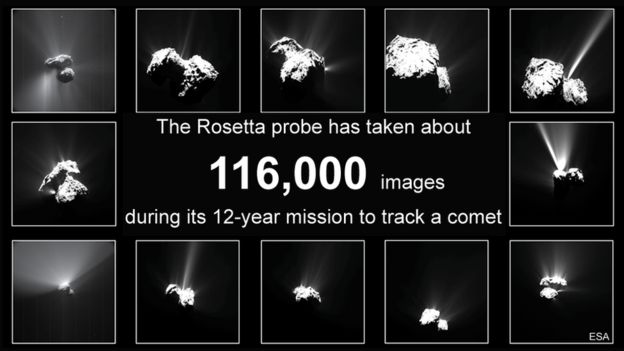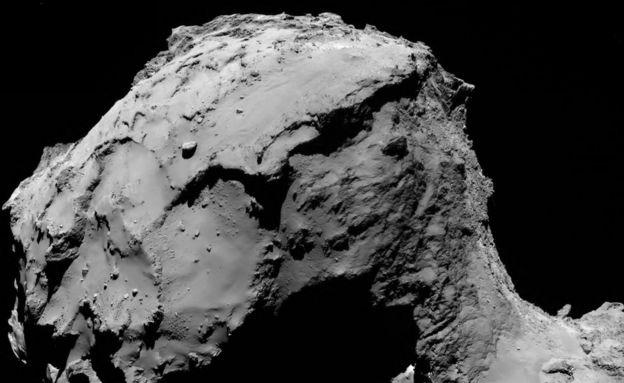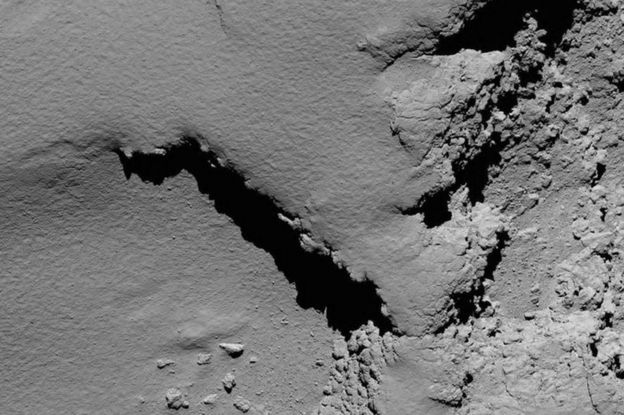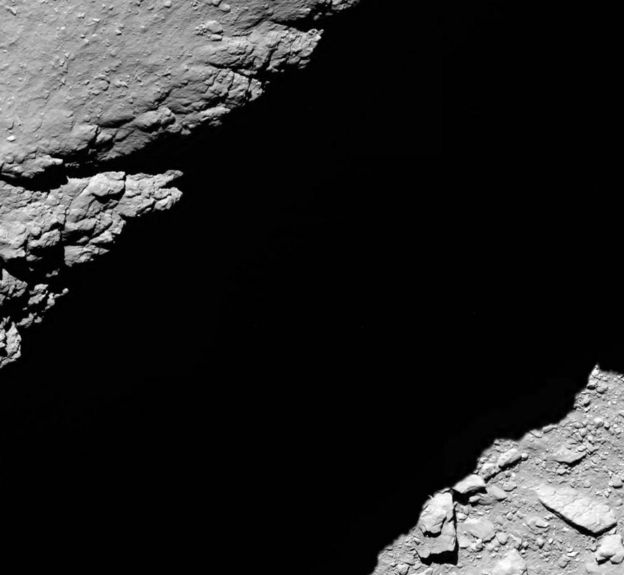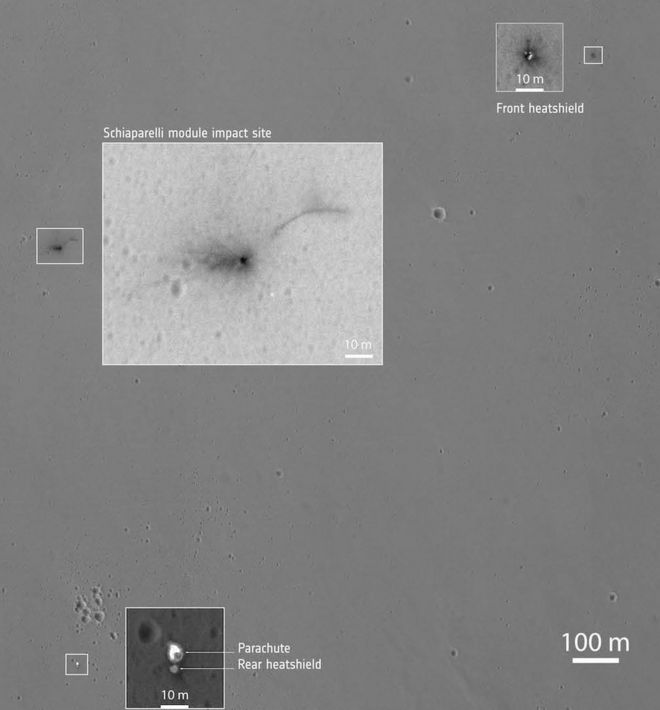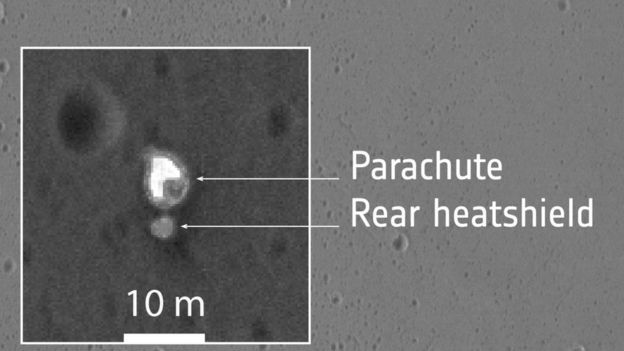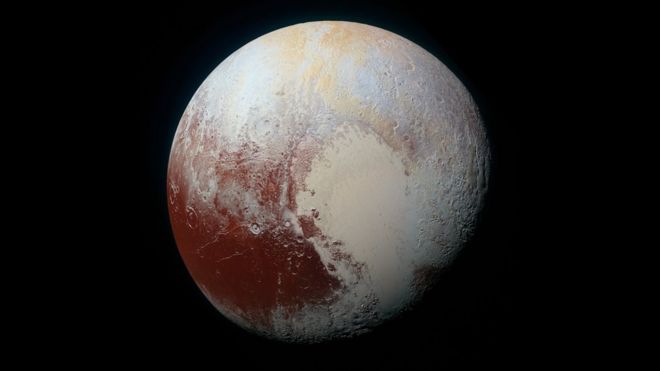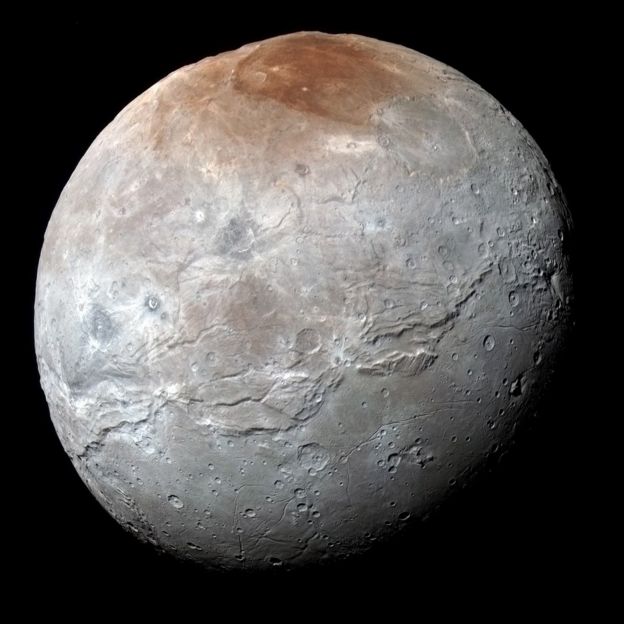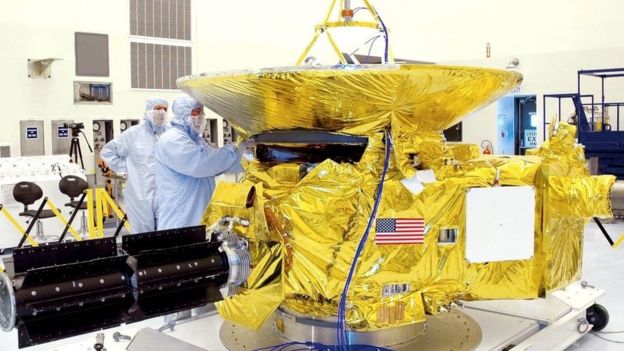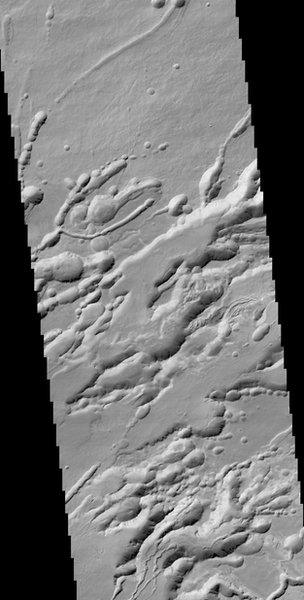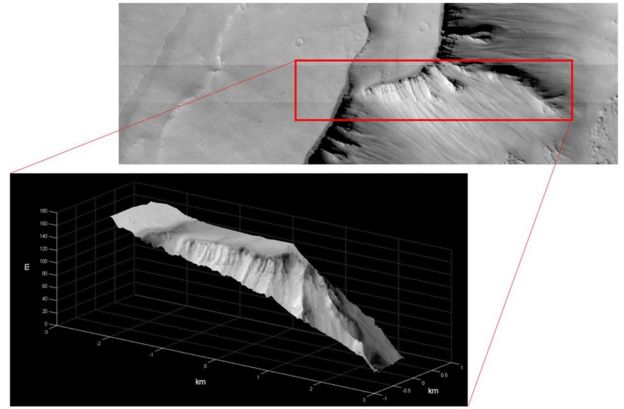Bigphoot2
Not sprouts! I hate sprouts.
- Joined
- Jul 30, 2005
- Messages
- 11,079
Rosetta probe set for comet collision
By Jonathan AmosBBC Science Correspondent, Darmstadt
Share
- 21 minutes ago
- From the sectionScience & Environment
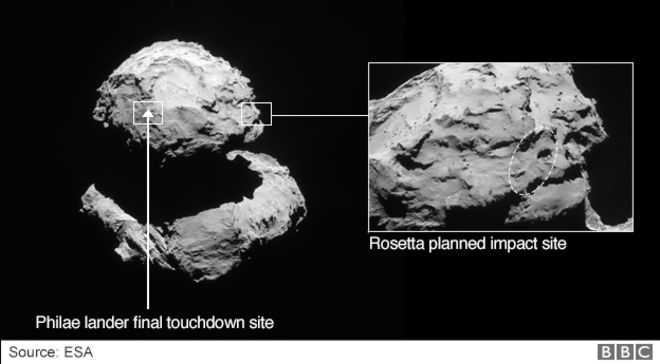
One of the most audacious space missions ever undertaken is about to come to an end.
The Rosetta probe that has been tracking a comet for the past two years is going to deliberately crash itself into the 4km-wide ball of ice and dust.
European Space Agency scientists say the satellite has come to the end of its useful life and they want to get some final, ultra-close measurements.
Rosetta is not expected to survive the impact with Comet 67P.
But even if some of its systems remain functional, pre-loaded software on board will ensure everything is shut down on contact.
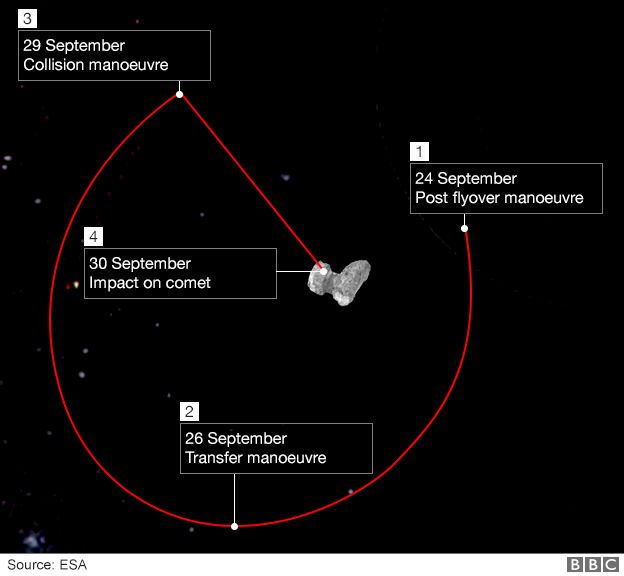
Controllers here at Esa's operations centre in Darmstadt, Germany, commanded Rosetta to change course late on Thursday.
Goodbye Rosetta: Watch the Sky at Night special this coming Sunday, BBC Four at 2200 BST
Rosetta arrived at 67P/Churyumov-Gerasimenko - to give the comet its full name - in August 2014, after a 10-year journey from Earth.
In the 25 months the probe has lived alongside the mountainous object it has acquired more than 100,000 images and instrument readings.
dropped a small robot called Philae on to the surface in November 2014 to gather additional information - a historic first in space exploration.
Comets are thought to be the near-pristine leftovers from the formation of the Solar System, and so all the data sent back from 67P will give scientists a remarkable glimpse into the conditions that existed four and a half billion years ago.
"We're now entering the final stage of the space segment of the mission, if you like. But Rosetta's data will be exploited for decades to come," said Rosetta flight director Andrea Accomazzo.
Comet 67P - "Space duck" in numbers

With 67P currently 573 million km from the Sun, and moving further away daily, there is now precious little solar power to operate the probe's systems.
- A full rotation of the body takes just over 12 hours
- The axis of rotation runs through the "neck" region
- Its larger lobe ("body") is about 4 × 3 × 2km
- The smaller lobe ("head") is about 2.5 × 2 × 2km
- Gravity measurements give a mass of 10 billion tonnes
- The volume is estimated to be just over 21 cu km
Not only that - the data rates associated with that separation have become painfully slow: just 40kbps, akin to dial-up internet speeds.
Rather than put the probe into hibernation or simply let it slowly fade into inactivity, the mission team has determined that the venture should try to go out in style - as bittersweet as that may be.
"We've taken the world on a thrilling scientific journey to the heart of a comet and, in turn, we've seen the world take Rosetta and Philae's amazing adventure into their hearts," Mark McCaughrean, the senior science advisor at Esa, told BBC News.
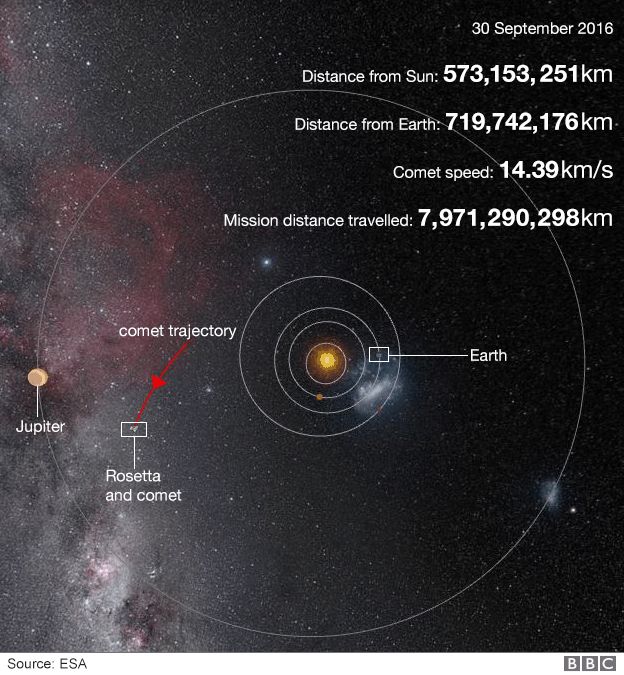
As the probe heads towards its destructive finale, it will train its cameras on some deep sink holes to try to see inside 67P.
It is in the walls of these pits that the scientists expect to get the highest-resolution images yet of one of Rosetta's key discoveries - the observation that the comet appears to be made up of lumps of material of very similar scale.
"There's a kind of bumpy texture that some people have called 'goose-bumps' and some others have called 'dinosaur eggs'," explained Mark Bentley from the Graz Institute for Space Research, Austria.
"These are features that are about three-ish metres in size. And whilst it's possible that they're produced by some weird and whacky erosion process, it could also be evidence of the sort of building blocks from which the comet has been formed."
It is unclear how many pictures Rosetta will be able to send back to Earth before it crashes. The desire is to despatch images taken from as little as perhaps 15m or 20m from the surface.
All the information will be routed through big radio dishes operated by the US space agency, which has been a partner on the project.
Esa project scientist Matt Taylor said the team had discussed the idea of putting Rosetta to sleep for a few years and then trying to wake it up again when 67P next visited the inner Solar System. But there was no confidence Rosetta would still be working: "It's like one of those 60s rock bands; we don't want to have a rubbish comeback tour. We'd rather go out now in true rock'n'roll style."
[email protected] and follow me on Twitter:@BBCAmos
http://www.bbc.co.uk/news/science-environment-37511861


